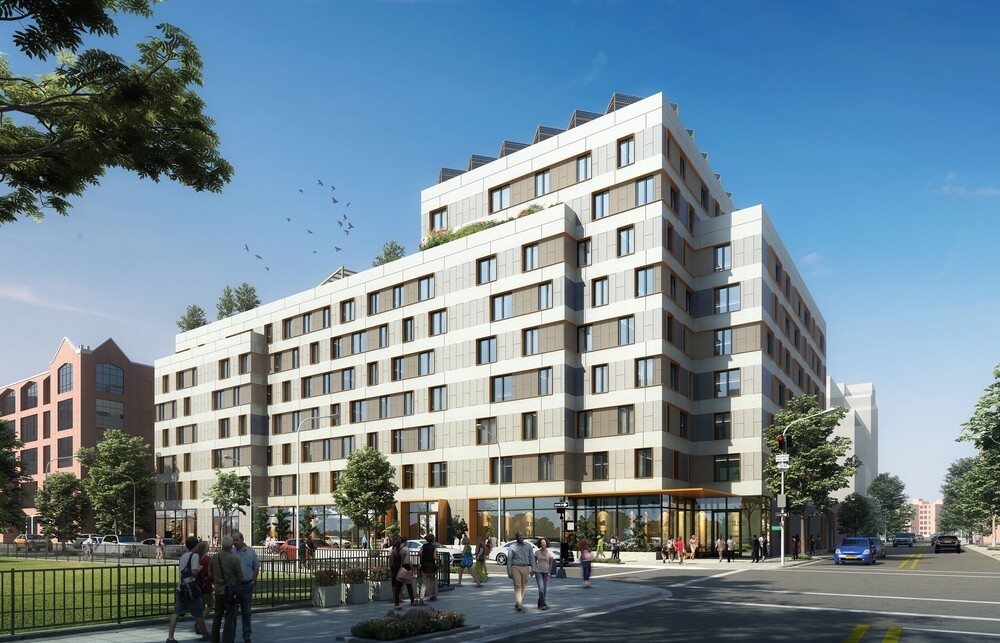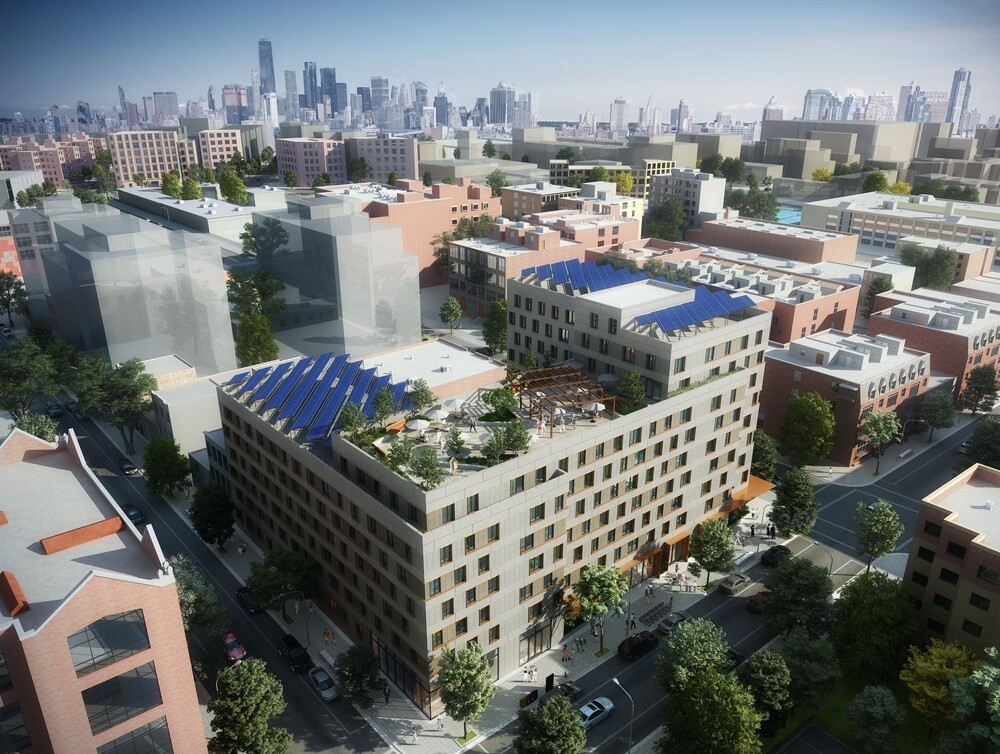Throop Corners: An Introduction to Passive House Design
Marvel’s design for Throop Corners, a 140-unit affordable housing project in Brooklyn, NY, is currently under construction to meet Passive House standards. From the onset, discussions with our client Riseboro Community Partnership established this project as having a strong sustainability focus, and this directive from the ownership team drove the design process towards Passive House.
Passive House is a building performance certification program which was initially developed in Germany by the Passivhaus Institute (PHI). This program established the Passivhaus performance standards which are considered the most rigorous standards in building energy efficiency. Passive House Institute US (PHIUS) was founded in 2007 to support Passive House design and certification in the American and Canadian climate. As compared to conventional buildings, PHIUS certified buildings are up to 85% more energy efficient and emphasize occupant comfort and wellbeing.
Fundamentally, PHIUS and PHI are performance-driven certification programs, focusing on building envelope and mechanical systems design. Performance is validated throughout the design process utilizing energy simulation computer modeling in the WUFI software platform. The pre-certification phase ensures well supported collaboration between PHIUS and the design team during the design process. Robust design coordination, appropriate construction detailing along with disciplined construction management, and testing are integral to the requirements, and buildings must perform as designed.

RiseBoro, as part of Unified Neighborhood Partners, came to the Throop Corners project with prior Passive House experience, joined by MEGA Contracting Group, who was brought onboard throughout the design process. Having clear intention of pursuing PHIUS early on allowed onboarding of specialized consultants to help guide the design process and was beneficial to establish performance criteria towards the beginning of a project. This also paved the way for synergy to take place by facilitating efficiency standards aligned with additional certifications and design goals such as those aligned with Enterprise Green Communities, Energy Star and Fitwel
Passive House differs from other programs, like LEED or WELL, which are driven by credits distributed among a broad array of directives which impact materials selection, water consumption, building operation and other performance metrics. PHIUS focuses directly on envelope thermal efficiency, energy use reduction and demonstrated air-tightness.
While integrating Passive House principles impacts overall project budget, it results in a more holistically designed building, balancing occupant comfort, thermal radiation and moisture control to create a healthy and energy efficient structure. Passive House certified buildings result in life-cycle cost savings, reduced carbon footprint, while emphasizing occupant comfort.
With our intentions clearly established, the team was well structured to commit to the PHIUS goals. Marvel and the engineering teams all focused efforts to ensure that Throop Corners complied with the Passive House principles.
In this case, the WUFI model setup by the Levy Partnership (now MaGrann Associates) was utilized as an iterative tool to support architectural and engineering design for envelope efficiency and cohesive decision making. In close collaboration with our PHIUS consultant, the designed rendered performance levels resulting in costs benefits from calibrating effective insulation by pulling back facade materials to save on construction costs, while still achieving the performance goals.
As Throop Corners construction progresses, Marvel’s experience with Passive House is also cemented as a valuable design tool for facilitating lower energy usage in new projects, paired with significant low-carbon, resilient and sustainable benefits. Architecture and engineering focused on efficient envelope and building systems design makes pursuing Passive House certification more cost effective for multi-family developments, though pursuing all methods of energy savings will be critical to continue improving the environmental footprint of new buildings.
